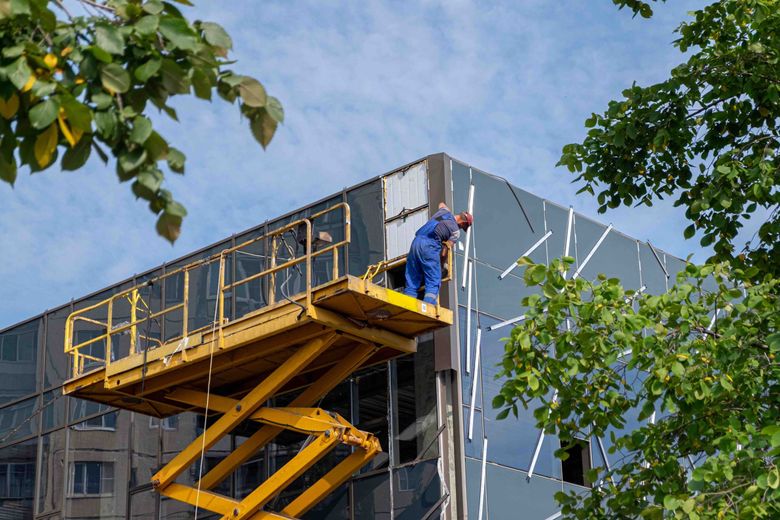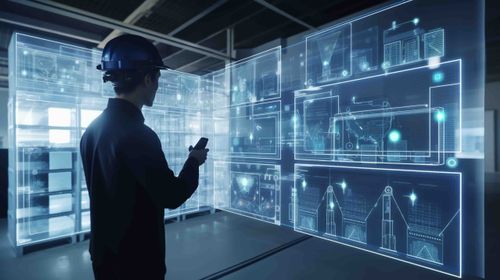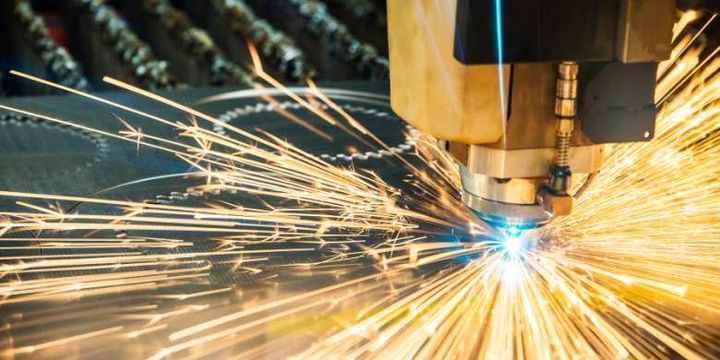Welcome to our comprehensive guide on the Construction Specifications Institute (CSI) Division 13, an essential component of the construction industry that focuses on special construction projects. The importance of understanding and adhering to the regulations within this domain cannot be understated, as neglecting these guidelines could lead to potentially dangerous and costly consequences. Together, we will explore the various subdivisions within Division 13, delving into the unique purpose and function of each subcategory. We will also discuss the importance of compliance in special construction projects, and the landscape of collaboration between various professionals in the construction industry, such as engineers, architects, and construction specification experts themselves. So, without further ado, let’s dive into the fascinating world of CSI Division 13 and unravel its many layers to ensure a solid understanding of its importance and application in the construction industry. Stay tuned for the upcoming sections, where we will delve deeper into the intricacies of this essential division, and learn how to maintain high standards of safety, quality, and sustainability in our special construction projects.
Suggested Posts:
Unraveling CSI Division 32 – Welcome to the World of Exterior Improvements
Master the Art of Utilities Construction with CSI Division 33
Introduction to CSI MasterFormat and Division 01
What is CSI Division 13?
At the heart of the construction industry lies a robust framework of standards, guidelines, and best practices known as the CSI Master Format. This framework is essential in ensuring high-quality, safe, and efficient construction projects across the globe. One of the key divisions within the CSI Master Format is Division 13, which focuses on special construction. Special construction projects are those that require unique expertise, exceptional creativity, and often involve unconventional techniques or materials. Examples of such projects include pre-engineered structures, air-supported structures, and integrated construction. But why should you care about Division 13? Well, as our world continues to evolve, so too does the demand for innovative and cutting-edge construction solutions. In this dynamic landscape, the need for a coherent and well-defined framework for special construction projects is more important than ever. And that’s where Division 13 comes in! As a comprehensive guide to successful special construction, it ensures that professionals in this field are equipped with the right knowledge and tools to deliver on these unique, challenging projects.
Significance of Division 13 in the Construction Industry
Division 13 is a critical component of the construction industry for several reasons. First, it helps to streamline the process of understanding and executing special construction projects, ensuring that all stakeholders are on the same page from the outset. This, in turn, minimizes misunderstandings, errors, and potential delays throughout the project, ultimately leading to higher-quality results. Second, Division 13 ensures that special construction projects adhere to the required safety standards and regulatory requirements. As these projects often involve complex and unconventional components or techniques, the stakes are high, and failure to comply with the necessary guidelines can have catastrophic consequences. Division 13 helps to mitigate this risk by providing a clear roadmap for compliance that industry professionals can rely on.
Finally, the guidelines and best practices within Division 13 are continuously evolving and adapting to the latest industry trends and advancements. This means that as a construction professional working with special construction, staying well-versed in the latest updates to Division 13 will ensure that you remain at the cutting edge of your field, and are able to deliver the best possible solutions for your clients. To sum it up, CSI Division 13 plays a critical role in ensuring the success, safety, and innovation of special construction projects. In the following sections, we will delve deeper into the subdivisions within Division 13, explore the importance of compliance, and discuss the role of construction specification experts in delivering top-notch special construction projects. Stay tuned!
Understanding the Subdivisions within CSI Division 13
In order to effectively manage and oversee special construction projects, CSI Division 13 is divided into several subdivisions, each focusing on specific aspects and functionalities. Gaining a clear understanding of these subdivisions is crucial for construction professionals who want to ensure compliance with guidelines and regulations. In this section, we will delve into the key subdivisions within Division 13 and explore their relationship to the overarching division.
13.1 Pre-Engineered Structures
This subdivision primarily deals with the design, fabrication, and assembly of pre-engineered structures. Examples include metal building systems, tensioned fabric structures, and geodesic domes. Adhering to the guidelines within this subcategory ensures that these structures are durable, safe, and compliant with building codes and standards.
13.2 Controlled Environment Rooms
Controlled environment rooms, such as cleanrooms and environmental chambers, fall under this subcategory. Guidelines in this subdivision dictate the construction and maintenance of these rooms, ensuring that they function optimally based on their intended purpose and industry requirements.
13.3 Special Purpose Rooms
This subdivision covers the design and construction of special purpose rooms, such as planetariums, darkrooms, and media production rooms. Compliance with regulations in this subcategory is vital to ensure that these specialized spaces meet technical specifications and provide the necessary functionality.
13.4 Special Facility Components
Special facility components include features and systems that are unique to specific types of construction projects. Examples include planetarium projectors, swimming pool components, and athletic equipment. Subdivision 13.4 provides guidelines and standards for the design, installation, and maintenance of these components, ensuring they operate safely and efficiently.
13.5 Integrated Construction
Integrated construction refers to specialized construction projects that require the seamless integration of various systems, such as structural, mechanical, and electrical elements. This subdivision provides a framework for coordinating and managing these complex projects, ensuring that each system functions harmoniously within the completed structure. It is important to note that each subdivision within Division 13 plays a vital role in the overall success of special construction projects. By adhering to the guidelines and regulations set forth in these subdivisions, construction professionals can guarantee safe, efficient, and high-quality projects that meet industry standards. In the next section, we will explore the importance of compliance in special construction projects and discuss the consequences of non-compliance.
How Division 13 Ensures Compliance in Special Construction Projects
The importance of compliance in special construction projects cannot be overstated. Adhering to Division 13 guidelines is crucial to ensuring that projects are completed to a high standard, meeting the necessary safety and regulatory requirements. In this section, we’ll dive deeper into the significance of compliance in the world of special construction projects, explore the consequences of non-compliance, and examine some past cases where non-compliance led to negative outcomes.
The Benefits of Compliance
When it comes to special construction projects, following Division 13 guidelines is essential to achieving success. Compliance with these guidelines promotes:
Safety: Adhering to the established rules and regulations ensures that the construction sites are safe for workers and that the finished structures are safe and reliable for occupants.
Quality: Meeting the guidelines set forth by Division 13 demonstrates that a project has been executed with careful planning and attention to detail, resulting in a high-quality build.
Regulatory adherence: Compliance with local, state, and federal regulations helps to avoid potential legal issues, fines, and delays in project completion.
Consequences of Non-Compliance
Failure to follow Division 13 guidelines in special construction projects can lead to serious consequences, including:
Project delays: Non-compliance with guidelines can cause construction delays, resulting in additional costs and time spent on the project.
Fines and legal issues: Disregarding regulations can lead to hefty fines and potential legal ramifications for the responsible parties.
Compromised safety: Neglecting to adhere to safety guidelines may result in accidents, injuries, or even fatalities on the construction site.
Reputation damage: Companies that fail to maintain compliance can suffer severe damage to their professional reputation, potentially limiting future business opportunities.
The Role of Construction Specification Experts in Division 13 Projects
In any construction project, numerous professionals work together to bring a concept to life. Special construction projects under CSI Division 13 are no exception. Construction specification experts play a critical role in these projects by ensuring that they are executed according to the stringent guidelines laid out in Division 13. A construction specification expert must possess a unique blend of skills and expertise to ensure the seamless execution of Division 13 projects. These specialized professionals must be well-versed in the latest industry regulations, guidelines, materials, and technologies while also maintaining a deep understanding of the specific requirements of each Division 13 subcategory. Their primary responsibility lies in translating the design intent of architects and engineers into detailed specifications, which serve as essential building blocks for the project. Collaboration is a vital aspect of the success of any special construction project. Construction specification experts must work closely with engineers, architects, and other professionals involved in the project, ensuring that all parties share the same vision.
This collaboration is crucial in identifying potential issues, conforming to safety and regulatory requirements, and completing the project on time and within budget. For instance, consider a scenario where a project involves constructing a pre-engineered metal building. In this case, the construction specification expert would collaborate with architects to develop detailed specifications for the building, including the materials, finishes, and structural systems. At the same time, they would engage with engineers to ensure that the design adheres to the applicable regulations and safety norms. Some of the primary responsibilities of construction specification experts in Division 13 projects include:
- Developing and reviewing technical specifications
- Ensuring adherence to Division 13 guidelines and regulatory requirements
- Collaborating with architects, engineers, and other professionals
- Identifying and addressing potential issues
- Ensuring the use of appropriate materials, technologies, and processes
Incorporating Sustainable and Green Building Practices in Division 13
In recent years, there has been a growing emphasis on sustainable and green building practices within the construction industry. As special construction projects often involve unique structures or environments, adapting Division 13 guidelines to incorporate environmentally friendly materials, techniques, and technologies is of the utmost importance.
Environmentally Friendly Materials
Division 13 projects can benefit from the use of sustainable materials, such as recycled or renewable resources. For instance, utilizing reclaimed wood, recycled metals, or bio-based materials can reduce the environmental impact of a project without compromising quality. These materials not only align with the principles of sustainability but also can potentially offer cost savings and contribute to LEED certification.
Green Building Techniques
Implementing green building techniques in special construction projects ensures the long-term performance and durability of the structures. Techniques such as passive solar design, natural ventilation, and daylighting can optimize energy efficiency, reduce resource consumption, and create a healthier and more comfortable environment for occupants.
Emerging Technologies
Adopting innovative technologies in Division 13 projects can significantly contribute to the realization of sustainable and green building practices. For instance, smart building systems that monitor and adjust energy consumption, water-efficient fixtures, and renewable energy systems like solar panels or wind turbines can help reduce a building’s carbon footprint and minimize its environmental impact.
Benefits of Sustainability in Division 13 Projects
Incorporating sustainability principles in Division 13 projects not only benefits the environment but also yields several tangible advantages, such as reduced operational costs, enhanced occupant well-being, and improved market appeal. Moreover, adhering to green building practices can result in various incentives, such as tax credits or expedited permitting processes. One successful example of a green construction project within Division 13 is the Bullitt Center in Seattle, Washington. Considered one of the greenest commercial buildings in the world, this six-story building boasts a net-zero energy consumption, geothermal heating, and a rainwater collection system to showcase the potential for sustainable design within special construction.
Final Thoughts
Embracing sustainable and green building practices in special construction projects is crucial for the future of the construction industry and our planet as a whole. By adapting Division 13 guidelines to encompass environmentally friendly materials, the implementation of green building techniques, and the integration of emerging technologies, special construction projects can pave the way for a more sustainable built environment.
Upgrade Your Building Security
Get in touch with a Swiftlane specialist for more information on the best access control and video intercom solution for your building.








